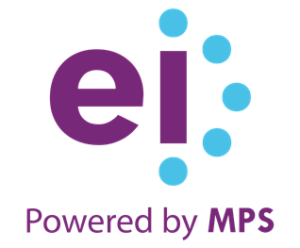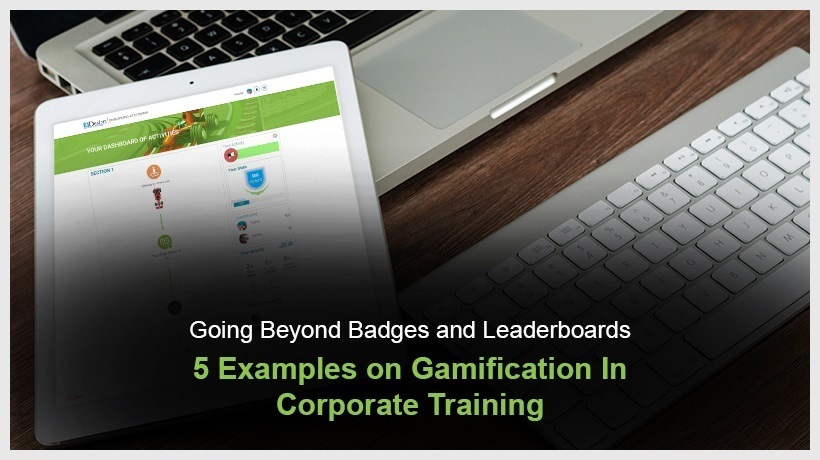6 Onboarding Gamification Examples That Will Help You Create A Solid Onboarding Strategy
It's no wonder that onboarding employees in a hybrid environment poses a challenge for engagement and retention. Within the first 45 days of their onboarding experience, 1 in 5 newly hired employees tends to question whether they should quit or continue the attempts to fit in their new workplace. Given that hiring and onboarding are an expensive and time-consuming process, it's a huge cost pressure when onboarding results in failure to integrate new inductees into the hybrid workforce.
What Are The Challenges Of Onboarding Employees In The Hybrid Workplace?
The short answer: engagement and retention!
A hybrid workplace creates employee onboarding challenges because:
- New hires are not co-located (on premises) with trainers and mentors.
- New hires working remotely (typically from home) may also not have access to the technology or infrastructure required in order to make optimal use of the onboarding training.
- There's the element of help, support, and motivation that hybrid workplaces cannot provide to onboarded staff at the same level as to new hires working entirely on premises.
The challenges many HR managers and onboarding leads face are multidimensional, including:
- Lack of adequate time, either online or in person, devoted by managers to newly onboarded staff
- Highly compressed onboarding timeframes
- Onboarding a multi-generational hybrid workforce may sometimes lead to communication barriers, especially during remotely conducted sessions
- Conflicting messages received from virtual and in-person sources
- A flood of data received from online and in-person onboarding sessions can cause cognitive overload
- The divergent expectations from supervisors, managers, and peers working in partially online and partially in-person workplaces
So, what's the answer in order to address these challenges? Onboarding gamification.
Why Does Onboarding Gamification Work?
The diversity of today's workforce, and a significant pivot towards a hybrid working environment, means the traditional onboarding process is no longer relevant. Gamified onboarding is an effective supplemental onboarding approach because it not only appeals to—predominantly tech-savvy—employees but also because of its ease of application in hybrid (online, virtual, and in-person) work environments.
Companies embracing onboarding gamification have experienced higher knowledge transfers, better retention rates, improved productivity, and heightened engagement. As a result, new inductees integrate quicker and in greater numbers compared to traditional onboarding approaches.
How To Gamify The Onboarding Experience?
A good gamified onboarding process requires certain mechanics. Delivering a successful gamified onboarding experience requires integrating the development process with the organization's business objectives. Other elements that lead to onboarding success through gamification include progress tracking, clearly defining the rules of the game, a graduated scale of challenges, meaningful rewards, and a recognition of accomplishments.
These elements of a successful gamified onboarding experience must then be delivered through an appropriate gaming environment and monitored and moderated through a mechanism of frequent feedback.
What Strategies Can You Adopt To Gamify Onboarding?
Because hybrid workforces pose new challenges, related to both virtual and in-person work environments, they require a set of carefully thought-out gamified employee onboarding strategies in order to improve the integration of new hires and drive engagement.
Some gamified onboarding strategies to improve new hire integration include:
- Creating highly immersive learning experiences through VR-based gamified learning environments.
- Using gaming features, such as leaderboards, points tables, and badges, to motivate a spirit of competitiveness among new hires.
- Organizing gaming competitions and challenges among onboarding employees, with suitable rewards and incentives to motivate engagement and participation [1]. Rewards may be honorary titles (Captain, Veteran, etc.) or limited-time special privileges (first dibs at new assignments, extra time to submit projects).
- Building team-based gaming assignments so that groups of onboarded staff cooperate and coordinate their efforts, thereby promoting better engagement and integration.
- Providing more engaging gaming experiences through interactive videos and gamified quizzes.
- Customizing your onboarding gamification experience by personalizing the gaming environment based on unique roles, responsibilities, and real-world work unit (department, section, business unit) settings.
Note: While implementing these gamification strategies can transform onboarding processes and dramatically enhance engagement and new hire integration, we shouldn't ignore one aspect of these processes: the human touch!
When planning their gamified onboarding, many instructional developers often focus entirely on virtual onboarding. This, effectively, further alienates new hires in a hybrid workforce. Those who primarily work remotely typically don't experience that "human touch," that occurs with in-person interaction. This is a vital element in order to integrate employees into new teams.
One way to make hybrid workplace onboarding gamification successful is to use a blended learning environment. This model leverages the ease and benefits of "anywhere, anytime" learning, using pre-recorded instructor-led content; but it also injects elements of human interaction, for instance via instructor-led chat sessions, live moderated discussion groups, and, if necessary, scheduled one-on-one instructor and learner sessions. Using this blended learning approach can supplement the online delivery component effectively.
Examples Of Onboarding Gamification
There is no one-size-fits-all example of a "perfect" gamified new employee induction program.
However, here are some onboarding gamification examples that can help drive engagement and foster better integration of newly hired talent:
- Learning portals
Create dedicated learning portals that new employees access during their onboarding process. By combining various elements in the portal, including gamification, microlearning, and personalization, learning portals can inject high degrees of engagement in gamified onboarding. - Responsive solutions
With millennials (and younger generations) now forming a significant number of new employees, using audience-specific onboarding techniques, such as responsive design and social learning, can significantly enhance new hire integration into the workforce. Elements, such as interactive visual features—as opposed to text and voice only—and gamified assessments, provide greater engagement to the onboarding process. - Theme-based learning approaches
Great onboarding gamification examples include approaches such as information layering, interactive content (including interactive videos, gamified assessments, and quizzes) all focused on specific learning themes. These examples not only deliver better learner interaction but also deliver a better gamified onboarding outcome, including engagement and retention. - Immersive designs
The use of immersive techniques is a great example of how organizations can achieve better integration outcomes, while also driving up new hire engagement. The use of 360-degree based videos in order to deliver a gamified real-world experience through Virtual Reality content is one very effective immersive tactic. - High-recall visual imagery
One way to promote engagement is to design your onboarding gamification experiences with high-impact imagery, including illustrated diagrams and infographics depicting real-life work situations. The use of such bold visual content not only helps new inductees memorize and retain learning content but also helps establish a lasting connection with the learning audience. - Story-based onboarding
Some gripping onboarding gamification examples use work-related storylines to deliver induction-oriented learning experiences in hybrid workplaces. These are supported by compelling narratives, absorbing interactivity, contemporary writing styles and approaches (tailored to a modern audience), and high-powered graphics to engage audiences and fast-track integration into the workforce.
Companies such as Deloitte, Pepsi, and PwC, among others, have adopted these and other proprietary onboarding gamification examples to deliver impactful and engaging employee induction programs. As a result, they've seen improved new hire integration, greater engagement, and higher levels of motivation among their workforce.
Parting Thoughts
If the ongoing health crisis has taught us anything, it's that a significant number of participants in today's workforce prefer a hybrid work arrangement: virtual, online, in person. We've also experienced a paradigm shift in employee expectations moving away from a primarily monetary environment to one with more engagement, consultation, career progression, participation, and involvement. In such an environment, old-school onboarding and induction approaches are no longer relevant.
I hope my article provides the cues that you can use to offer gamified onboarding and deliver better new hire integration while improving employee engagement and participation in the onboarding process.
Sources:
[1] How to Use Game-based Learning to Drive Learner Engagement and Motivation
Read More:
- eBook: The Advanced Guide To Virtual Induction And Onboarding Training For Your Remote Employees
- Virtual Reality In eLearning – Using VR As A Microlearning Nugget For Induction And Onboarding
- Case Study on Transforming Instructor-Led Induction and Onboarding Training to a Virtual Mode
- Tips and Strategies to Shorten New Hire Time-to-Productivity with Employee Onboarding Training
- 7 Must-See Corporate Induction And Onboarding Training Examples Featuring Strategies That Work
Editor's Note:
We at eLearning Industry understand the onboarding challenges faced by hybrid workplaces. While hybrid setups help reduce operational costs, they also pose a challenge for employee engagement and retention. In fact, the challenges many HR managers and onboarding leads face are multidimensional. Instead of handling these challenges in a conventional way, organizations need to adopt a more innovative approach to address today's workforce diversity and a significant shift towards a hybrid work environment while onboarding new employees. In our experience, onboarding gamification has demonstrated a significant impact in tackling today's onboarding challenges in a hybrid work setup.
Over the years, we at eLearning Industry have witnessed higher knowledge transfers, better retention rates, improved productivity, and increased engagement in companies that have adopted onboarding gamification. We must acknowledge the potential of gamified onboarding strategies in improving the integration of new hires and driving engagement. Creating highly immersive learning experiences that leverage the latest trends, using gaming elements (leaderboards, points tables, badges, etc.), organizing competitions, having team-based gaming activities, and personalizing onboarding gamification experiences can transform onboarding processes and significantly improve engagement among new recruits. Moreover, organizations need to realize the importance of the human element in their virtual and hybrid onboarding processes. Instead of focusing solely on technology-driven onboarding methods, a blended learning approach can make way for successful onboarding in the hybrid work environment.









